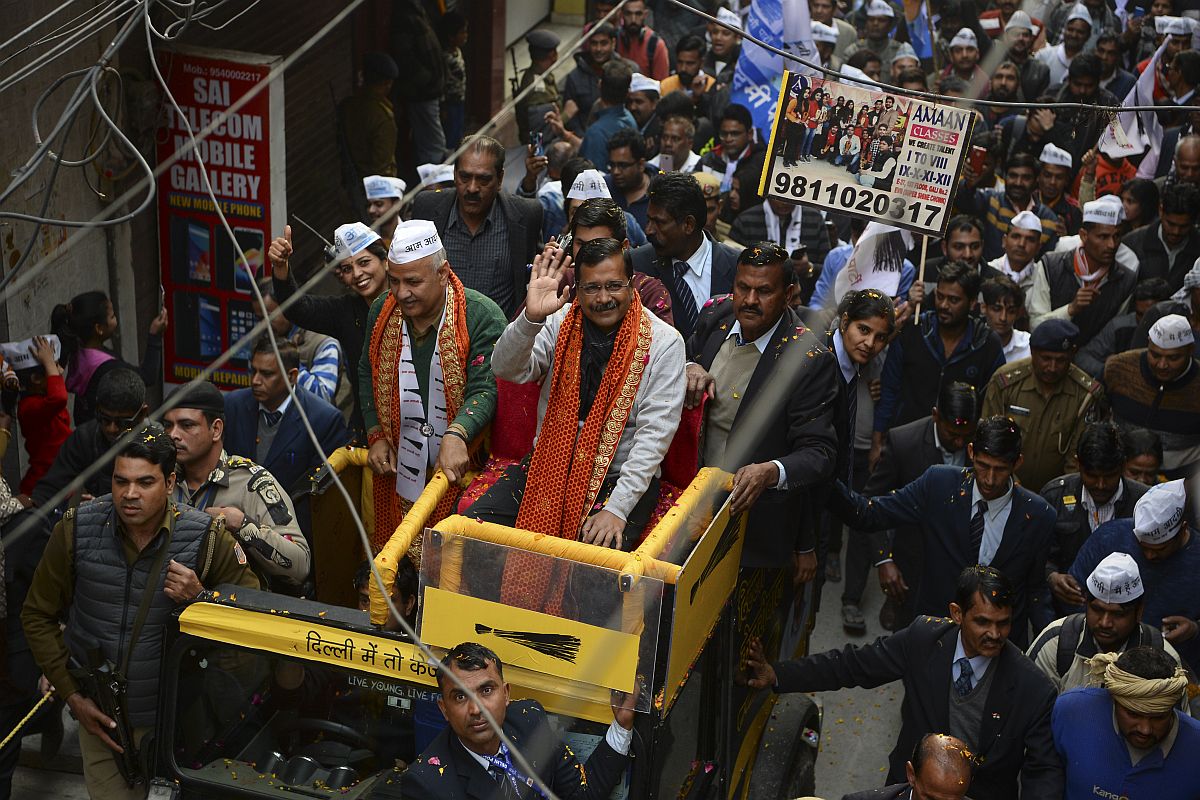Eighth Delhi Assembly Session extended by two days
The first session of the Eighth Delhi Assembly has been extended until March 3 to complete pending legislative work.
While Muslims, who fear the proposals the most, are active, many others have joined them out of concern that an attempt is being made to alter the secular character of the nation.

Delhi Chief Minister Arvind Kejriwal waves to supporters during a road show. (Photo: AFP)
With the Aam Aadmi Party set to return to power in the Capital after a stunningly impressive showing, certain trends suggested in these columns are confirmed. First, a record of governance and development can triumph over communalism presented in the garb of nationalism.
Second, sobriety in political discourse does find takers while, conversely, rabble-rousers can take a political party thus far and no further. Third, while the Prime Minister is the most potent ace in the Bhartiya Janata Party’s pack of cards nationally, using him in provincial elections may not always work and may over time even reduce his efficacy.
Advertisement
Fourth, there is anger in the Capital, especially among young people, over both economic and social issues and if these trends obtain elsewhere, they pose serious challenges that the Central government must address quickly. Fifth, and this is worrying, when the BJP is confronted by a party with a reasonable record of governance, its default option will be to muddy the waters, a strategy seen in Delhi and one that is unfolding in West Bengal.
Advertisement
Finally, while Delhi’s voters have decided who will manage their affairs, the elephant in the room hasn’t gone away. For now that the dust has settled on an astonishingly acrimonious campaign, the government at the Centre will have to address severe apprehensions voiced by a significant section of society on the contentious citizenship legislation as well as concerns that the proposal for a National Register of Citizens may disenfranchise many citizens.
So long as the campaign was live, the BJP taking advantage of the capital’s disproportionate share of airtime, was able to project the protest at Shaheen Bagh as the focal point of anger with its initiatives. The fact, though, is that the protests at Delhi are but a small part of the opposition to the Centre’s move; there is widespread concern around the country.
While Muslims, who fear the proposals the most, are active, many others have joined them out of concern that an attempt is being made to alter the secular character of the nation. The Trinamul Congress in West Bengal has played an active part in the protests, but elsewhere the movement has largely projected itself as apolitical.
The presence ~ or absence ~ of politicians though is of lesser moment than the fact that apprehensions voiced by a substantial part of the citizenry must be addressed by the rulers of the day. And this cannot be done by adopting obdurate positions or by calling the protestors names. It cannot also be done by refusing to allay concerns except in vague and often condescending terms.
If the Central government is convinced of the sincerity of its actions and believes there is no reason for any citizen to feel threatened, it must argue its case with logic and not rhetoric. Next, its representatives must reach out to each group of protestors, to community leaders and to others. It must understand people’s fears and seek to allay them without labelling dissent as disaffection. This is the lesson to be drawn from Delhi.
Advertisement